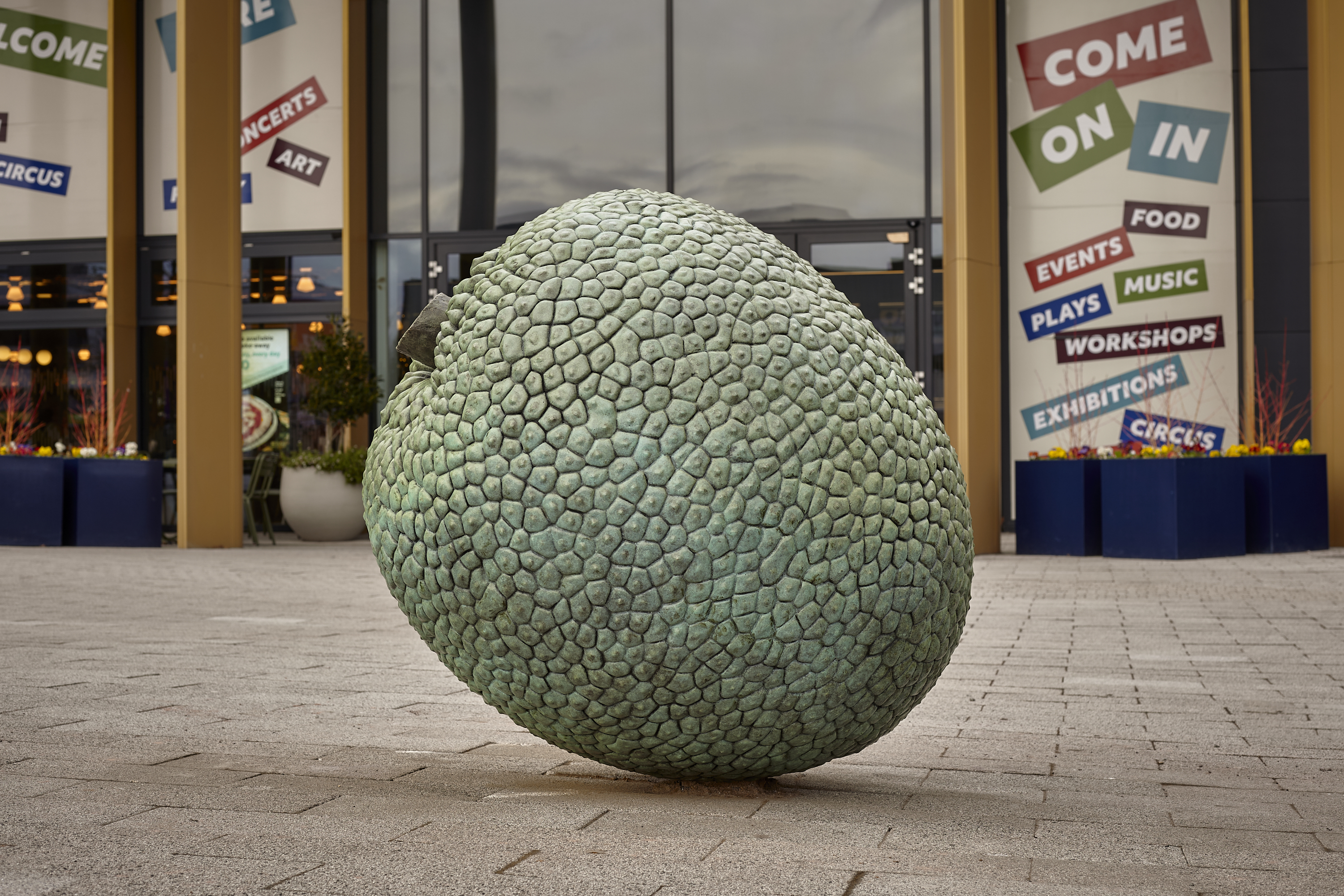The first edition of Breadfruit (Moraceae) and also including Custard Apple (Annonaceae) and Soursop (Annonaceae)(2021) of oversized breadfruit, soursop, and custard apple bronze sculptures representing Caribbean fruit and vegetables was commissioned by Hackney Council; curated and produced by Create London and made possible with Art Fund support. Along with Ryan's solo exhibition Along a Spectrum at Spike Island, Bristol, it won her the Turner Prize in 2022. The group, sited near St Augustine’s Tower in Hackney Central, is a commemorative trio of sculptures honouring the contribution of the Windrush Generation. The second of the edition is in a private collection (USA).
The third and final edition of Breadfruit (Moraceae) (2021) was acquired by the University of Warwick Art Collection and Sculpture Park (open to the public), with the support of the Contemporary Art Society and the V&A Purchase Fund, in 2023. It is a human-scale object that invites touch. The level of detail within the work and its green patination suggests its natural inspiration without being illustrative or sentimental. Veronica Ryan's work explores ideas around colonialism, migration and belonging. It draws on her own history and experience. She uses forms redolent of pods and seeds that hold life and pay homage to their involvement in everyday life as almost invisible elements of both landscape and place, of home and culture and of their fetishisation in spiritual ceremonies. The breadfruit comes from Oceania and was introduced to Caribbean islands by British and French explorers in the late eighteenth century, largely to provide food for slaves working on plantations. The sculpture itself speaks of migration and enslavement. But it also speaks of the way that Caribbean communities made a home for themselves in London and the Midlands through the development of shops that imported produce like breadfruit from the Caribbean. These shops were points of cultural connection - the first public displays of Caribbean life, besides music, in the UK. Today, a study by climate-change scientists found that breadfruit is unusually resilient to the effects of global warming compared to other staple crops such as wheat, rice and soya beans. Whereas future climate models suggest yields and suitable growing areas for many staples will shrink, breadfruit will remain remarkably stable, meaning there is an opportunity for its use to be extended to areas likely to be hardest hit by food shortages created by global warming.


